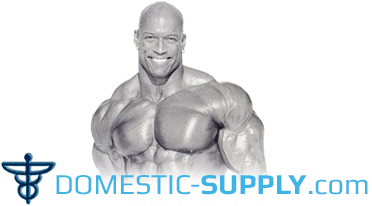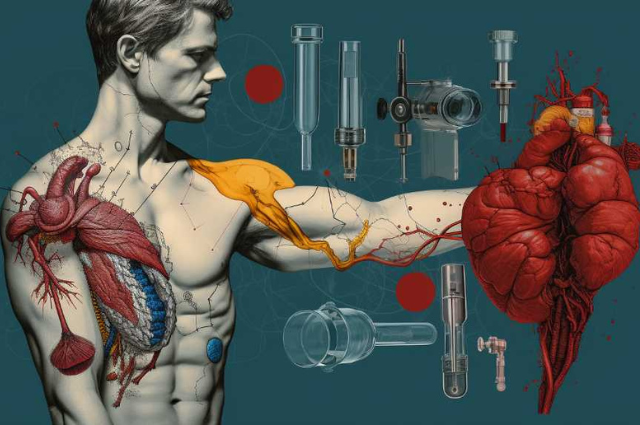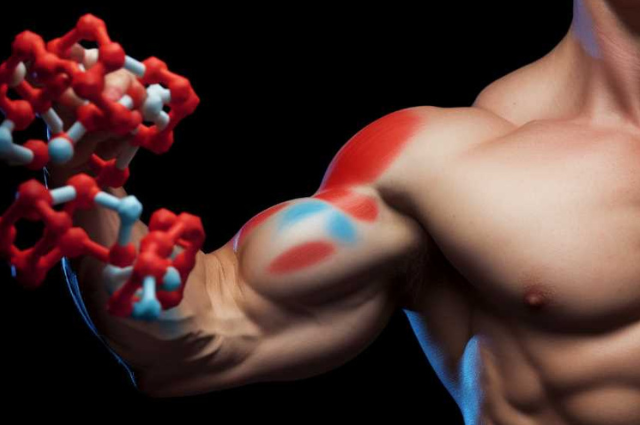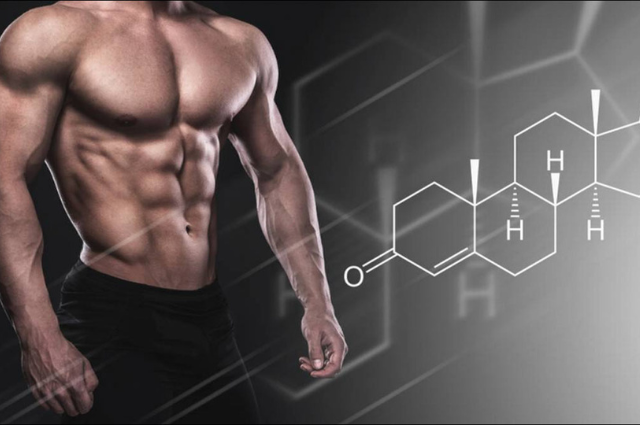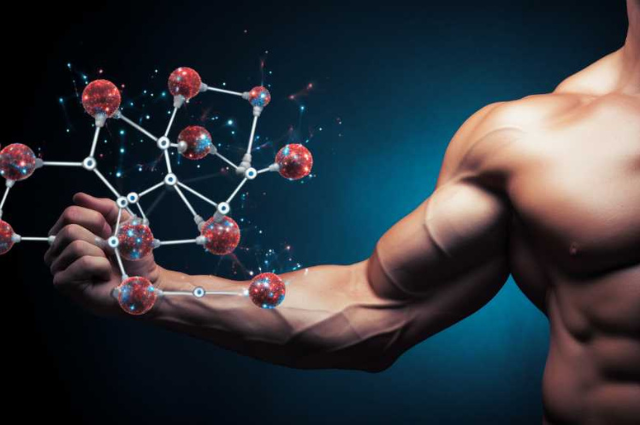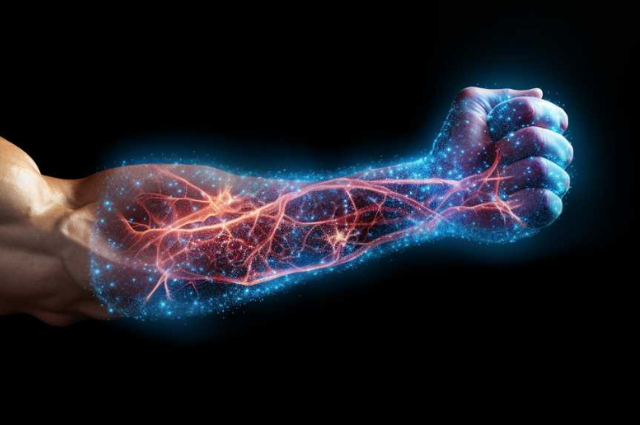Understanding Anabolic Steroids: Potential Side Effects Guide
This comprehensive guide provides an in-depth understanding of anabolic steroids and their potential side effects.
Anabolic steroids, synthetic substances that mimic testosterone, are often used to enhance athletic performance but can result in serious physical and psychological consequences.
This guide aims to elucidate how these substances work, their allure, the most common types, and the potential health risks associated with their use.
Furthermore, it offers an exploration into safer alternatives.
Knowledge is the key to making informed decisions; this guide aims to equip readers with the necessary understanding to navigate the complex world of anabolic steroids responsibly.
Key Takeaways
- Anabolic steroids are synthetic variations of testosterone, classified as anabolic-androgenic steroids (AAS), and stimulate muscle growth and bone density.
- Anabolic steroids bind to androgen receptors, trigger biochemical processes for muscle growth and strength, and increase protein synthesis and positive nitrogen balance.
- Anabolic steroids have a range of side effects, from minor to severe, including acne, hair loss, heart disease, and liver damage.
- Anabolic steroids can lead to cardiovascular complications, liver damage, hormonal imbalances, musculoskeletal effects, and psychological risks.
Defining Anabolic Steroids
Although anabolic steroids are commonly known for their use in bodybuilding, they are essentially synthetic variations of testosterone, the male sex hormone. The term 'anabolic' refers to the process of building or synthesizing, which in this context, relates to the development and growth of muscle tissue. These substances are scientifically classified under the group of drugs known as 'anabolic-androgenic steroids' (AAS).
Anabolic steroids stimulate anabolic effects like muscle growth, bone density increase, and the body's protein synthesis, thereby contributing to enhanced physical performance and appearance. They also mimic the androgenic effects of testosterone, influencing male traits such as body hair growth and deepening of the voice.
However, it's crucial to understand that the use of these substances brings about a significant alteration in the body's natural hormonal balance. This can lead to a host of potential side effects, including but not limited to liver damage, cardiovascular diseases, psychological disturbances, and reproductive disorders.
Furthermore, the misuse of anabolic steroids can result in a condition called 'hypogonadism', where the body reduces or completely stops the production of natural testosterone. This is due to a negative feedback mechanism, where the body, sensing an abundance of testosterone (or its synthetic variant), slows down its own production.
How Anabolic Steroids Work
Anabolic steroids function by binding to androgen receptors in the body, initiating a series of reactions that promote muscle growth and strength. This mechanism is primarily facilitated by the steroid's resemblance to the natural male hormone testosterone, which is the primary androgen in the human body.
When anabolic steroids bind to these receptors, they trigger a complex biochemical process. This process begins with the activation of the androgen receptor, which subsequently moves into the cell nucleus. Once inside the nucleus, the steroid-receptor complex interacts with specific regions of the DNA, known as hormone response elements. This interaction prompts the transcription of specific genes that encode for proteins involved in muscle growth and repair.
The increase in protein synthesis fosters a positive nitrogen balance, leading to greater muscle mass and strength. This is because proteins, the building blocks of muscle tissue, are composed of amino acids, which contain nitrogen. When more protein is synthesized than is broken down, a positive nitrogen balance is achieved, promoting muscle growth.
However, the impact of anabolic steroids extends beyond muscle growth. They also influence the body's metabolism, resulting in increased energy expenditure and fat burning. Furthermore, anabolic steroids can stimulate the production of red blood cells, enhancing oxygen delivery to muscles and improving athletic performance.
The Allure of Steroids
Despite the known risks, the allure of anabolic steroids lies in their ability to significantly enhance muscle growth and athletic performance. This enticement predominantly appeals to individuals involved in competitive sports, where physical prowess and muscular strength are critical for success. Anabolic steroids work by mimicking the effects of the male hormone testosterone, thereby promoting the growth of skeletal muscle and inducing male secondary sexual characteristics.
The attraction of these steroids extends beyond their muscle-building properties. They also facilitate a faster recovery time, allowing athletes to train harder and more frequently. This is due to the steroids' ability to reduce muscle damage during strenuous exercise, decrease muscle soreness, and speed up the repair of muscle tissue.
However, the allure of anabolic steroids is not without its dangers. Their use can lead to a range of side effects, from minor ones like acne and hair loss to more severe issues such as heart disease and liver damage. Alarmingly, the misuse of these drugs can also lead to psychological dependence, with users developing an addiction to the enhanced performance and physical appearance that steroids provide.
Moreover, the allure of steroids often overshadows the ethical implications of their use. In many sports, the use of performance-enhancing drugs is considered cheating, and athletes caught using these substances are often penalized or banned.
Common Anabolic Steroids Types
Several types of anabolic steroids are commonly used, each with its own unique properties and potential side effects. The most prevalent types include testosterone, nandrolone, stanozolol, and trenbolone.
Testosterone, the primary male sex hormone, is often used in its synthetic form to stimulate muscle growth and fat reduction. However, long-term use can lead to heart disease, mood disturbances, and male pattern baldness.
Nandrolone, also known as Deca-Durabolin, is favored by athletes for its ability to increase lean body mass and aid in joint recovery. Its side effects are similar to testosterone, with the addition of potential negative effects on the liver and sexual function.
Stanozolol, sold under the brand name Winstrol, is another anabolic steroid commonly used for its muscle-building and fat-reducing effects. It is, however, associated with a risk of liver toxicity, cardiovascular disease, and changes in mood and behavior.
Trenbolone, a veterinary drug often illegally used by bodybuilders, is known for its potent muscle-building effects. Its use can lead to severe cardiovascular and psychiatric side effects, as well as kidney and liver damage.
Physical Side Effects of Steroids
Excessive use of anabolic steroids can lead to numerous physical side effects, some of which may be irreversible and detrimental to health. These drugs, traditionally used to increase muscle mass and performance, can cause a cascade of adverse effects when used outside of clinical recommendations.
Anabolic steroids have been linked to cardiovascular complications. These include hypertension, myocardial infarction, and stroke. The mechanism behind this is multifactorial, involving an increase in LDL cholesterol, a decrease in HDL cholesterol, and an overall alteration in lipid metabolism.
Furthermore, these substances are associated with liver damage. They can cause peliosis hepatis, a condition characterized by the presence of blood-filled cysts in the liver. More seriously, prolonged use of steroids can lead to liver cancer, a potentially fatal consequence.
In men, anabolic steroids can induce a series of hormonal imbalances, leading to testicular shrinkage, reduced sperm count, and infertility. Women may experience a deepening of the voice, menstrual irregularities, and an increased body hair growth, a condition known as hirsutism. Both genders can experience severe acne and skin infections, due to increased oil production in the skin.
Moreover, anabolic steroids can affect the musculoskeletal system, causing tendon rupture due to the disproportionate increase in muscle strength compared to the strength of the tendons.
Psychological Risks of Steroid Use
In addition to aforementioned physical consequences, anabolic steroids also carry significant psychological risks, further escalating the dangers associated with their misuse. These psychoactive substances can cause profound alterations in mood and behavior, often leading to severe mental health disorders.
Studies have shown that steroid abuse can precipitate mood disorders, such as mania and depression. Users often exhibit mood swings, irritability, and aggressive behavior, a term colloquially known as 'roid rage'. These mood alterations may lead to violent actions and can severely impact interpersonal relationships and professional life.
Substance-induced psychosis, a condition wherein users lose touch with reality, is another severe side effect. Symptoms may include delusions, hallucinations, and disorganized thinking. Steroid use may also exacerbate pre-existing mental health conditions, such as schizophrenia or bipolar disorder.
Moreover, chronic anabolic steroid abuse has been linked to addiction. The misuse of these substances can lead to a psychological dependence, characterized by cravings, difficulty in stopping usage despite harmful effects, and withdrawal symptoms upon cessation. This dependence is often associated with a distorted body image, a condition known as muscle dysmorphia, where users perceive themselves as physically weak and small despite being muscular.
Furthermore, research indicates a heightened risk of suicide among steroid users, particularly during withdrawal. This underscores the potential fatal consequences of the psychological impact of steroids.
Long-term Health Consequences
While the immediate effects of anabolic steroids can be distressing, it is the potential long-term health consequences that underscore the true severity of their misuse. The long-term impacts are multifaceted and can manifest in various organ systems, reflecting the pervasive influence of these compounds.
Cardiovascular complications are among the most severe outcomes, with steroids linked to an increased risk of heart disease. This risk is due to the steroid's influence on lipid profiles, with evidence showing an increase in low-density lipoprotein (LDL) and a decrease in high-density lipoprotein (HDL). This alteration exacerbates the development of atherosclerosis, leading to an increased risk of myocardial infarction and stroke.
Liver damage is another significant concern in long-term steroid use. The hepatotoxicity of anabolic steroids can lead to conditions like peliosis hepatis, hepatocellular adenomas, and even hepatocellular carcinoma. These conditions can be life-threatening and require urgent medical attention.
Furthermore, endocrine disorders can arise from the disruption of the hypothalamic-pituitary-gonadal axis, leading to fertility issues and sexual dysfunction. In males, this can present as testicular atrophy, reduced sperm count, and gynecomastia. In females, menstrual irregularities, hirsutism, and deepening of the voice can occur.
Skeletal changes are also notable in long-term misuse. Premature closure of growth plates in adolescents can stunt growth, while adults can experience osteoporosis due to reduced bone density.
Safer Alternatives to Steroids
Given the significant health risks associated with anabolic steroids, exploring steroid alternatives - substances that can aid in muscle building and performance enhancement without the detrimental side effects - becomes an imperative discussion point.
Scientific evidence points to the efficacy of various natural substances that mimic the muscle-building and performance-enhancing effects of anabolic steroids, along with a significantly reduced risk profile. For instance, Branched-Chain Amino Acids (BCAAs) have shown great promise in muscle recovery and growth. These essential amino acids (Leucine, Isoleucine, and Valine) are not produced by the body and must be obtained through diet or supplementation.
Beta-hydroxy-beta-methylbutyrate (HMB) is another such alternative. It's a compound that the body produces when it metabolizes the amino acid leucine. Studies suggest that HMB can help improve muscle mass and performance, particularly when combined with resistance training.
Creatine, a naturally occurring compound in muscle cells, is another well-studied performance-enhancer. Supplementation with creatine has been shown to enhance strength, increase lean body mass, and improve exercise performance.
Lastly, protein supplements, particularly whey protein, can promote muscle growth and recovery. High-quality protein provides the body with essential amino acids required for protein synthesis, the process that leads to muscle growth.
However, despite their potential benefits, it is crucial to recognize that these alternatives are not without risks. Overuse or misuse can still lead to side effects, such as digestive issues or kidney damage in the case of excessive protein supplementation. Therefore, it is always advised to use these supplements responsibly and under the guidance of a healthcare professional.
Frequently Asked Questions
What Are the Legal Implications of Using Anabolic Steroids Without a Prescription in Various Countries?"
Legal implications of unauthorized anabolic steroids use vary globally.
In some jurisdictions, it's considered a criminal offense with penalties including fines or imprisonment.
Others regulate it as a controlled substance, requiring a prescription for legal use.
Violations may lead to sanctions such as professional licensing consequences for health professionals or competitive bans for athletes.
It's crucial to understand local laws before engaging in such activity to avoid legal repercussions.
How Are Anabolic Steroids Detected in Drug Tests?"
Anabolic steroids are detected in drug tests through various laboratory techniques. Urine samples are typically examined using gas chromatography-mass spectrometry or liquid chromatography-mass spectrometry. These techniques identify and measure substances in the urine, including the presence of anabolic steroids.
Metabolites, the byproducts of the body processing the steroids, are also detected. These testing methods provide a reliable way to identify steroid use.
What Is the Typical Cost of Anabolic Steroids on the Black Market?"
The cost of anabolic steroids on the black market can vary significantly due to factors such as geographical location, supply and demand, type of steroid, and quality. Prices can range anywhere from $15 to over $150 per dosage, depending on these variables.
It's important to note that buying these substances illegally carries legal and health risks, including the potential for counterfeit or contaminated products.
What Are the Repercussions of Using Anabolic Steroids in Professional Sports?"
The repercussions of using anabolic steroids in professional sports are significant. These include immediate disqualification, suspension, or permanent ban from the sport.
Additionally, steroid abuse can lead to serious health risks such as cardiovascular diseases, liver damage, and mental health issues.
The athlete's reputation is also tarnished, leading to loss of endorsements and public trust.
Hence, the usage of anabolic steroids is highly discouraged in professional sports.
Are There Any Cultural or Societal Factors That Influence Anabolic Steroid Use?"
Yes, there are various cultural and societal factors that influence anabolic steroid use.
Societal pressure to conform to certain physical ideals can drive individuals to use these substances.
Additionally, certain cultures may place a high value on physical strength and prowess, encouraging steroid use.
Lastly, the competitive nature of professional sports and a desire for an edge can also be influential.
Conclusion
In conclusion, the use of anabolic steroids presents numerous physical, psychological, and long-term health risks.
While the allure of enhanced performance and physique may be strong, the potential damage to the body and mind can be severe and irreversible.
It is essential for individuals to consider these risks and seek safer alternatives to steroids, in order to maintain optimal health and well-being.
Comprehensive understanding and responsible decision-making can significantly reduce potential harm from steroid misuse.
